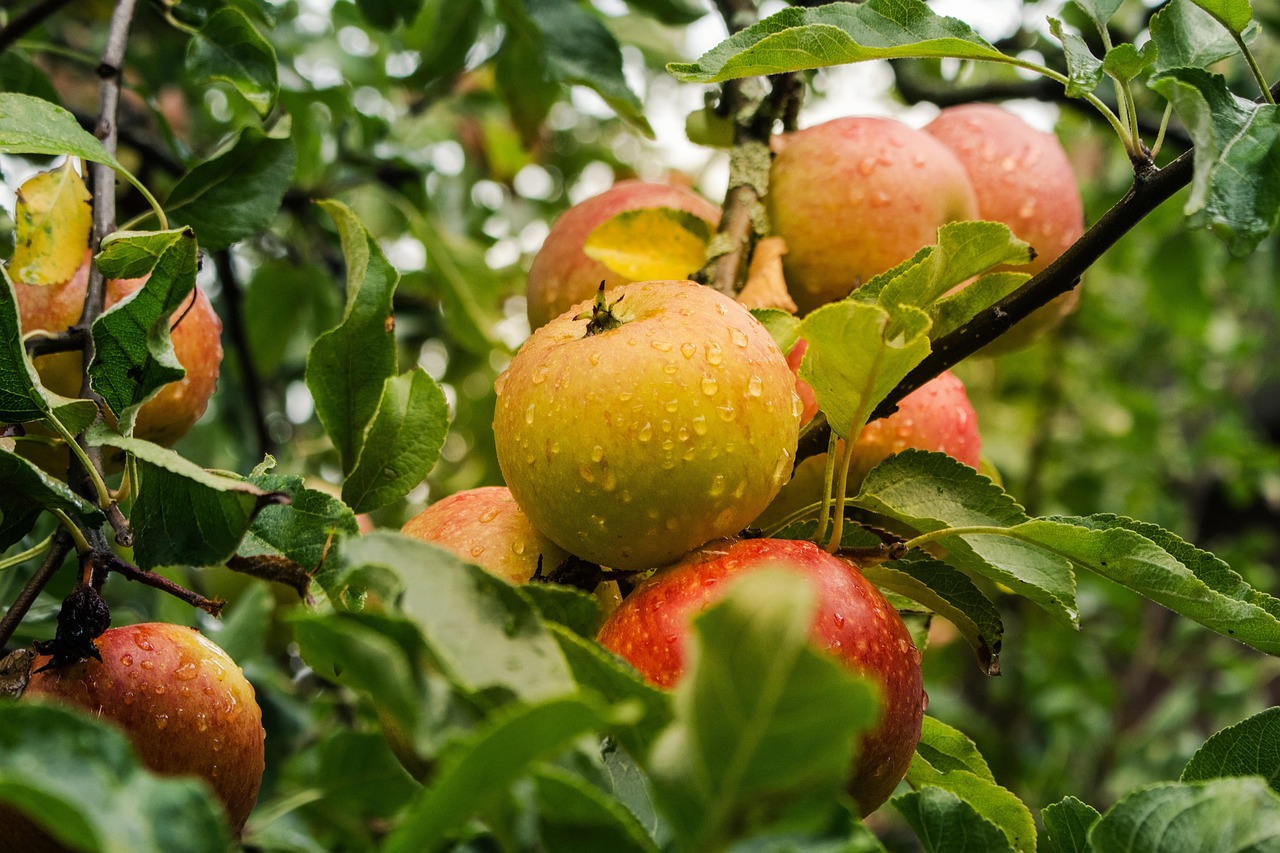Sweet Gumball Tree Problems? Here’s How to Handle Them Like an Expert
Sweet Gumball trees, known for their unique appearance and vibrant fall colors, can face various problems. Common issues include pest infestations, diseases, and environmental stress. Understanding these challenges and their solutions can help you maintain a healthy tree.
The Sweet Gumball tree, or Liquidambar styraciflua, is a deciduous tree native to North America. It is popular in landscaping for its stunning foliage and distinctive spiky seed pods. However, like any tree, it is susceptible to certain problems. Recognizing these issues early can prevent further damage and ensure your tree remains healthy and attractive.

One of the most common problems affecting Sweet Gumball trees is pest infestations. Aphids, scale insects, and borers can weaken the tree by feeding on its sap and wood. Additionally, diseases such as anthracnose and root rot can significantly impact the health of the tree. Environmental stressors, including drought and poor soil conditions, also play a critical role in the vitality of these trees.
Common Issues with Sweet Gumball Trees
Understanding the common issues that affect Sweet Gumball trees is essential for effective management. Below are some of the prevalent problems:
- Pest Infestations: Aphids and borers are the most common pests.
- Diseases: Fungal infections like anthracnose can lead to leaf drop.
- Environmental Stress: Drought and poor soil can stunt growth.
Addressing these challenges requires a combination of monitoring, preventive measures, and treatment options. Below is a table summarizing some key information about Sweet Gumball tree problems.
| Problem | Symptoms | Solutions |
|---|---|---|
| Aphids | Curling leaves, sticky residue | Insecticidal soap or neem oil |
| Anthracnose | Dark spots on leaves, premature leaf drop | Fungicide applications, proper spacing |
| Root Rot | Wilting leaves, stunted growth | Improve drainage, avoid overwatering |
Regularly inspecting your Sweet Gumball tree for these issues can help you catch problems early. Consider implementing a routine care schedule that includes watering, pruning, and monitoring for pests. By staying proactive, you can greatly reduce the likelihood of serious problems developing.
As you manage your Sweet Gumball tree, it is also essential to provide it with adequate nutrients. Healthy trees are better equipped to withstand environmental stressors and resist pests and diseases. Fertilizing in early spring can give your tree the boost it needs for growth and resilience.
In summary, understanding the common problems associated with Sweet Gumball trees allows for better management strategies. By identifying symptoms early and applying appropriate solutions, you can ensure that your Sweet Gumball tree thrives in your landscape. The next sections will delve deeper into specific pests and diseases affecting these trees, as well as detailed care techniques to enhance their health.
Pest Management for Sweet Gumball Trees

One of the most significant challenges when caring for Sweet Gumball trees is managing pests. These insects can cause severe damage if left unchecked. Understanding common pests and how to effectively deal with them is crucial for maintaining tree health.
Aphids
Aphids are small, soft-bodied insects that feed on the sap of Sweet Gumball trees. They can reproduce quickly, leading to large infestations. Signs of an aphid problem include:
- Curling leaves
- Sticky residue on leaves and ground
- Presence of ants, which are attracted to the honeydew produced by aphids
To manage aphids, consider the following methods:
- Insecticidal Soap: This is a safe and effective treatment that suffocates aphids.
- Neem Oil: A natural pesticide that disrupts aphid life cycles.
- Natural Predators: Introducing ladybugs can help control aphid populations.
Scale Insects
Scale insects appear as small bumps on branches and leaves. They feed on tree sap, weakening the tree and potentially leading to more significant issues. Symptoms of a scale infestation include:
- Yellowing leaves
- Stunted growth
- Sticky residue and sooty mold on the leaves
Management strategies for scale insects include:
- Pruning Infested Branches: Remove heavily infested branches to contain the problem.
- Insecticidal Soap or Oil: These can effectively kill scale insects when applied directly.
- Encouraging Beneficial Insects: Ladybugs and lacewings can help control scale populations.
Diseases Affecting Sweet Gumball Trees

Diseases can also pose a significant threat to the health of Sweet Gumball trees. Recognizing symptoms early is vital for effective treatment. Below are some common diseases and their management strategies.
Anthracnose
Anthracnose is a fungal disease that causes dark spots on leaves, leading to premature leaf drop. This can weaken the tree significantly. Signs to watch for include:
- Dark, sunken lesions on foliage
- Leaf curling and wilting
- Reduced vigor and growth
To manage anthracnose, consider the following approaches:
- Fungicide Applications: Apply fungicides during the early stages of infection to minimize spread.
- Proper Spacing: Ensure adequate air circulation around the tree to reduce humidity levels.
- Regular Pruning: Remove infected leaves and branches to prevent further infection.
Root Rot
Root rot is caused by overwatering or poorly drained soil, leading to fungal infections that damage the roots. Symptoms include:
- Wilting leaves despite adequate watering
- Stunted growth or dieback
- Mushy roots upon inspection
To combat root rot, implement these strategies:
- Improve Drainage: Ensure that water does not pool around the root zone by amending soil with organic matter.
- Avoid Overwatering: Use a moisture meter to check soil moisture levels before watering.
- Fungicide Treatment: If root rot is suspected, a fungicide may help save the remaining healthy roots.
Nutrient Deficiencies in Sweet Gumball Trees
Nutrient deficiencies can lead to poor growth and increased vulnerability to pests and diseases. Common deficiencies include nitrogen, potassium, and magnesium. Symptoms may manifest as yellowing leaves or poor growth patterns.
Signs of Nutrient Deficiency
- Nitrogen Deficiency: Yellowing of older leaves while younger leaves remain green.
- Potassium Deficiency: Leaf margins turning brown or yellow, with possible curling.
- Magnesium Deficiency: Interveinal chlorosis, where leaf tissue turns yellow but veins remain green.
To address nutrient deficiencies, consider the following actions:
- Soil Testing: Conduct a soil test to determine nutrient levels and amendments needed.
- Fertilization: Apply a balanced fertilizer in early spring based on soil test results.
- Organic Amendments: Incorporate compost or well-rotted manure to improve soil quality naturally.
Caring for your Sweet Gumball tree involves proactive pest management, disease control, and ensuring adequate nutrition. By implementing these practices, you can help your tree thrive in any environment. The next section will explore additional care techniques that enhance the overall health of Sweet Gumball trees.

Essential Care Techniques for Sweet Gumball Trees
To ensure the longevity and health of your Sweet Gumball tree, implementing proper care techniques is essential. These techniques encompass watering, pruning, mulching, and seasonal considerations. Each of these elements plays a vital role in maintaining optimal tree health and preventing problems.
Watering Practices
Watering is one of the most crucial aspects of tree care. Sweet Gumball trees require consistent moisture, especially during their early years. However, it is important to avoid overwatering as this can lead to root rot.
- Deep Watering: Water deeply but infrequently to encourage deep root growth. Aim for about 10-12 inches deep with each watering.
- Frequency: During dry periods, water once a week. In cooler months, reduce the frequency as the tree needs less water.
- Soil Check: Before watering, check the soil moisture by inserting your finger about two inches into the soil. If it feels dry, it’s time to water.
Pruning Techniques
Pruning is essential for maintaining the shape and health of your Sweet Gumball tree. Proper pruning helps to improve air circulation, reduce disease risk, and promote new growth.
- Timing: Prune in late winter or early spring before new growth begins.
- Tools: Use sharp, clean tools to make clean cuts. This prevents damage to the tree and reduces the risk of disease.
- Cutting Method: Remove dead, damaged, or crossing branches to improve overall structure. Aim for a central leader to maintain an open canopy.
Mulching Benefits
Applying mulch around the base of your Sweet Gumball tree offers numerous benefits. Mulch helps retain soil moisture, suppresses weeds, and regulates soil temperature.
- Type of Mulch: Organic mulches like wood chips or shredded bark are ideal as they decompose over time, enriching the soil.
- Application Depth: Apply a layer of mulch about 2-4 inches deep, keeping it a few inches away from the trunk to prevent rot.
- Refresh Mulch: Replenish mulch annually to maintain its effectiveness and appearance.
Seasonal Considerations
Caring for your Sweet Gumball tree also involves understanding seasonal changes and their effects on tree health. Different seasons require different approaches to care.
Spring Care
Spring is a critical time for Sweet Gumball trees as they begin their growth cycle after winter dormancy. Key tasks for spring care include:
- Fertilization: Apply a balanced fertilizer to provide essential nutrients for new growth.
- Pest Monitoring: Begin inspecting for pests and signs of disease as the weather warms up.
- Watering: Ensure consistent watering as temperatures rise and evaporation increases.
Summer Maintenance
During summer, focus on maintaining moisture levels and monitoring for heat stress. Important considerations include:
- Deep Watering: Continue deep watering practices, especially during hot spells.
- Pest Management: Stay vigilant against pests that thrive in warm weather, such as aphids and borers.
- Pruning: Consider light pruning to remove any dead or damaged leaves without compromising the overall shape.
Fall Preparations
As fall approaches, preparations for winter become essential. The changing season requires specific care actions:
- Leaf Cleanup: Rake fallen leaves to prevent fungal diseases and maintain aesthetics.
- Final Watering: Ensure the tree is adequately watered before winter dormancy sets in.
- Mulch Refresh: Add a fresh layer of mulch to protect roots from freezing temperatures.
Winter Care
Winter care focuses on protecting your Sweet Gumball tree from harsh conditions. Strategies include:
- Avoid Salt Damage: If roads are salted during winter storms, wash salt off the tree with water if possible.
- Wind Protection: Consider wrapping young trees with burlap to shield them from strong winds and frost.
- Pest Monitoring: Inspect trees for any signs of pests that may overwinter on the bark or branches.
The care you provide throughout the seasons has a lasting impact on the overall health of your Sweet Gumball tree. By implementing these techniques, you create an environment where your tree can thrive, reducing susceptibility to pests and diseases. The next section will explore advanced techniques for enhancing growth and resilience in Sweet Gumball trees.
Advanced Techniques for Enhancing Growth and Resilience
In addition to the basic care techniques discussed earlier, several advanced methods can further enhance the growth and resilience of your Sweet Gumball tree. These techniques aim to improve the overall health of the tree and increase its ability to withstand pests, diseases, and environmental stressors.
Soil Health Improvement
Healthy soil is the foundation for a thriving Sweet Gumball tree. Enhancing soil health can significantly improve nutrient availability and root development. Consider the following:
- Cover Crops: Planting cover crops during the off-season can improve soil structure, reduce erosion, and increase nutrient content when tilled back into the soil.
- Compost Tea: Applying compost tea can introduce beneficial microorganisms to the soil, enhancing microbial diversity and improving nutrient uptake by the tree.
- Aeration: Aerating the soil around the tree can help increase oxygen levels and improve water infiltration, promoting deeper root growth.
Integrated Pest Management (IPM)
Implementing Integrated Pest Management (IPM) strategies can provide a holistic approach to pest control. This method combines various management practices to minimize pest impact while protecting beneficial insects. Key components of IPM include:
- Monitoring: Regularly inspect your tree for signs of pests or diseases. Early detection is critical for effective management.
- Biological Control: Encourage natural predators such as birds and beneficial insects to keep pest populations in check.
- Cultural Practices: Use crop rotation and companion planting to disrupt pest life cycles and reduce infestation rates.
Proper Mulching Techniques
While mulching is a basic technique, applying advanced mulching practices can significantly benefit your Sweet Gumball tree. Consider the following:
- Layering Materials: Combine different types of organic materials such as straw, wood chips, and leaves to create a mulch layer that decomposes at different rates, providing ongoing nutrients.
- Inoculating Mulch: Consider adding beneficial fungi or microbes to your mulch to promote healthy soil biology as it decomposes.
- Weed Suppression: Use a thicker layer of mulch to suppress weeds more effectively, reducing competition for nutrients and water.
Seasonal Fertilization Strategy
A well-planned fertilization strategy can ensure that your Sweet Gumball tree receives the nutrients it needs throughout its growth cycle. Consider these tips:
- Slow-Release Fertilizers: Use slow-release fertilizers that provide a steady supply of nutrients over time, minimizing the risk of nutrient leaching.
- Foliar Feeding: Applying liquid fertilizer directly to the leaves during the growing season can improve nutrient absorption and overall tree health.
- Autumn Fertilization: Apply a high-phosphorus fertilizer in the fall to promote root development before winter dormancy.
Final Thoughts
Caring for Sweet Gumball trees requires a multifaceted approach that includes understanding their unique needs and challenges. By implementing proactive pest management strategies, effective disease control, and proper seasonal care, you can significantly enhance the health and resilience of your trees.
Moreover, incorporating advanced techniques such as improving soil health, utilizing integrated pest management, and establishing a thoughtful fertilization schedule can lead to an even more vigorous tree. Engaging with your Sweet Gumball trees through attentive care not only ensures their longevity but also enriches your landscape with their stunning beauty.
Your dedication to maintaining these trees will yield rewards in the form of vibrant foliage, beautiful fall colors, and a thriving ecosystem in your garden. By following these guidelines and remaining vigilant about their care, you can enjoy the numerous benefits that Sweet Gumball trees bring to your outdoor space.
